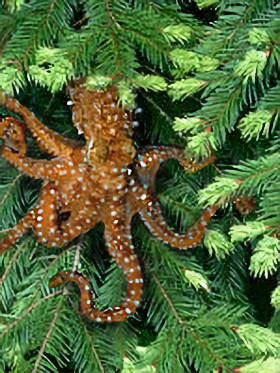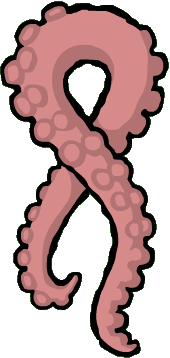Tree Octopi

What They Are

These octopi are amphibious, so they spend only their early life and a part of the mating season in the water.
Thanks to the moisture of the rainforests and their specialized skin adaptions, they can stay out of the water for long periods of time.
However, they do spend time in small pools of water to avoid unnecessarily drying out.
These cephalopods have the largest brain to body ratio in their family.
Where They Live

The map above shows where they live, including their spawning waters.
Why It's Endangered



Efforts were made to protect these animals in the past, but their efforts were stopped by the timber industry. The octopi were found a nuisance by the lumberjack, as they would hide among the felled trees, gumming up sawmills and staining pulp vats with their ink. Meetings were held to teach everyone (incorrectly) that tree octopi were bad, as is shown in the photograph above. For this image, many of these gentle species were killed.
How You Can Help
- Write your representatives to let them know that you are concerned and that you feel the tree octopus should be included on the Endangered Species List and given special protection.
- Write to celebrities asking them to speak out on behalf of the tree octopus during press junkets and award shows.
- Help build awareness of the tree octopus by telling your friends, co-workers, or even random people on the streets.
- Place a tentacle ribbon on your website or social media.
- Participate in tree octopus awareness marches. You can demonstrate their plight during the march by having your friends dress up as tree octopuses while you attack them in a lumberjack costume.
- Pamphlet your neighborhood. Tentacle ribbons make excellent doorknob hangers.
- Boycott companies that use non-tree-octopus-safe wood harvesting practices.


